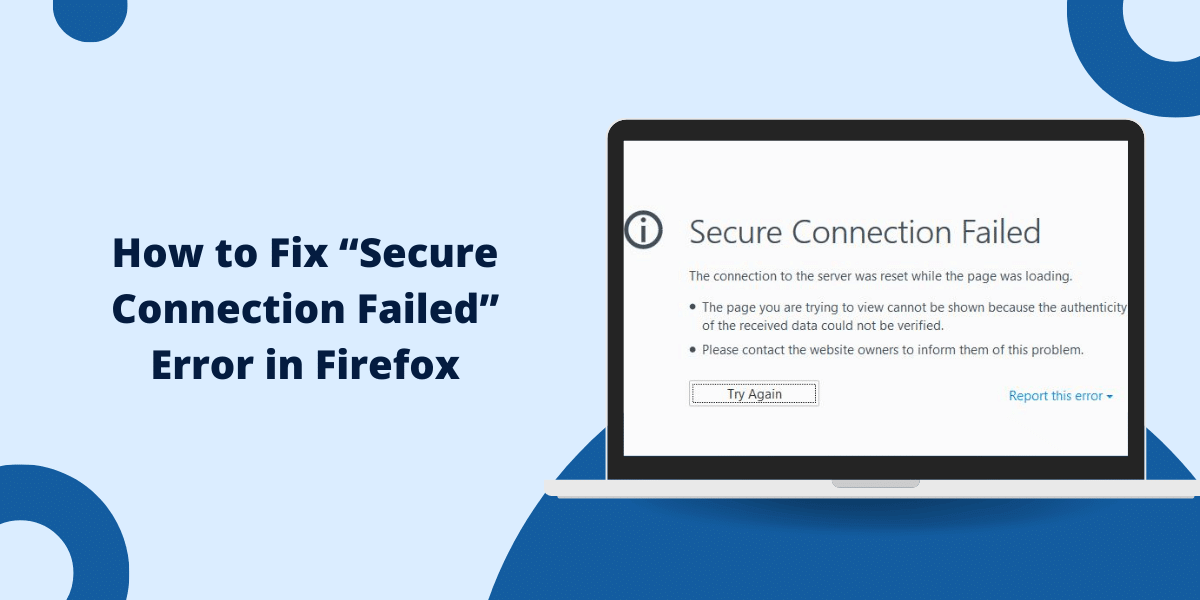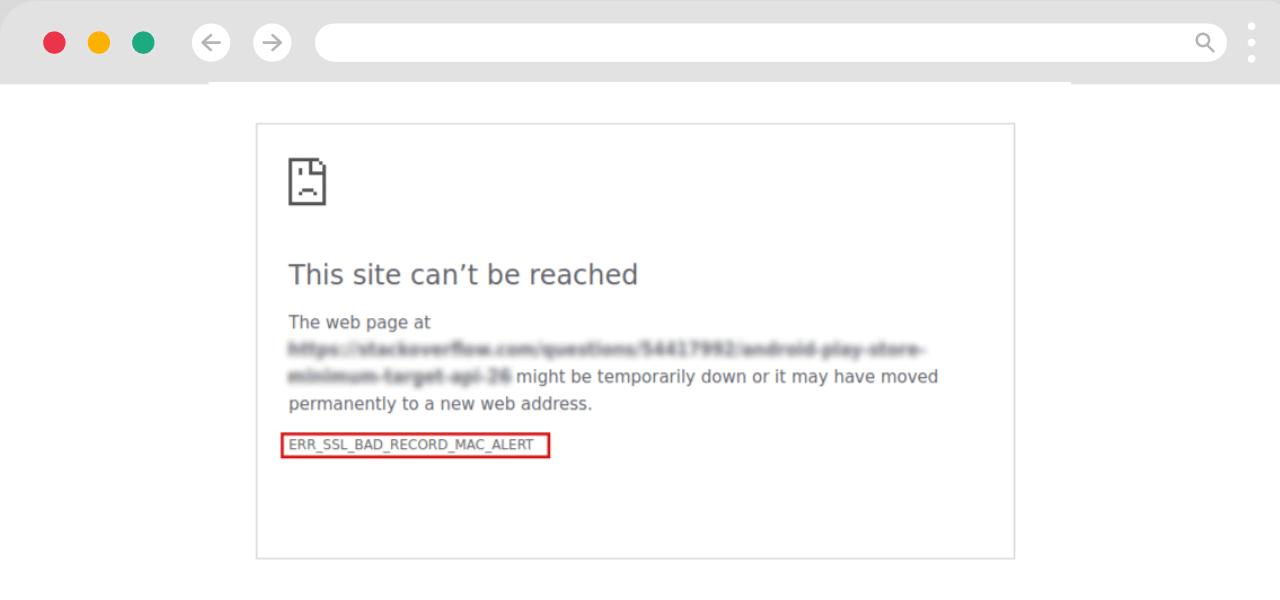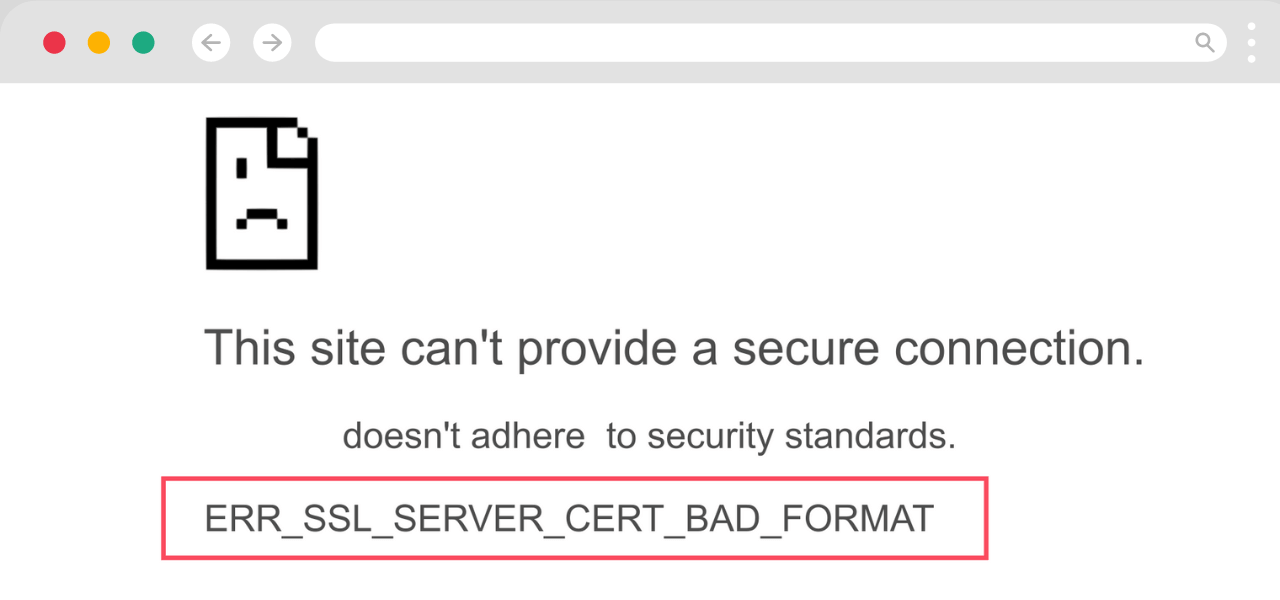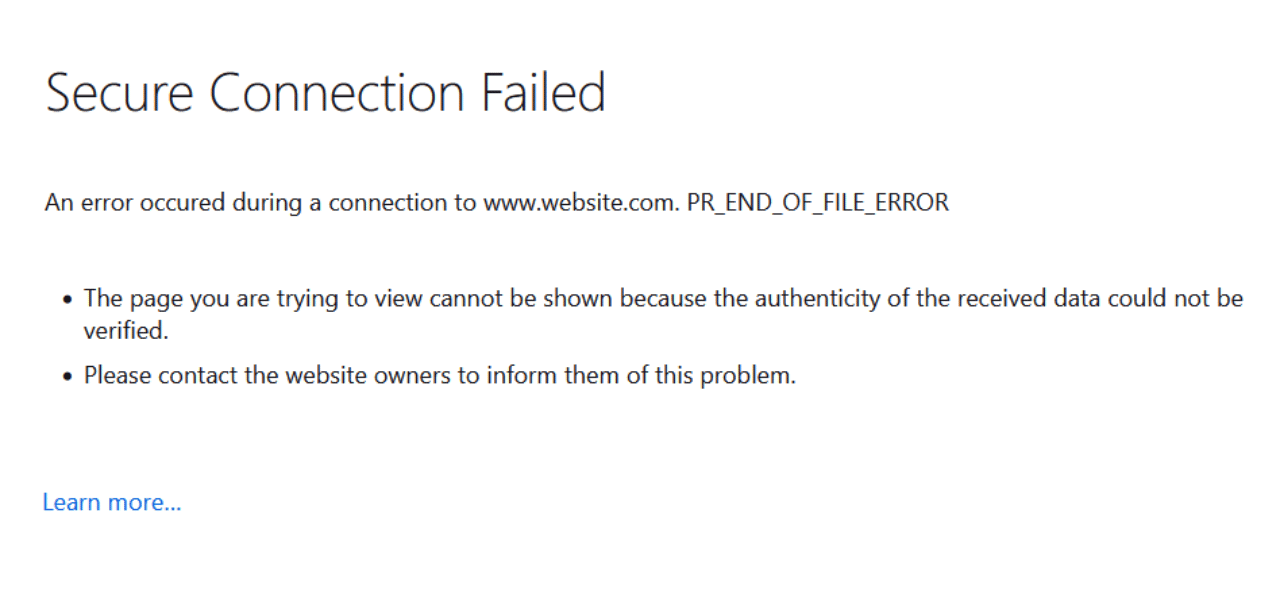What Does Secure Connection Failed Error Mean?
The “Secure Connection Failed” error in Firefox indicates that the browser is unable to establish a secure HTTPS connection to a website. This usually occurs due to issues with the website’s security certificate. Here are the top ways to troubleshoot and fix this error on Firefox:
What Causes the “Secure Connection Failed” Error?
Some common causes for the “Secure Connection Failed” error in Firefox include:
- Expired or invalid SSL certificate on the website
- Domain name mismatch in the SSL certificate
- Problems with your computer’s date and time settings
- Issues with antivirus or firewall software blocking SSL connections
- Network problems or connectivity issues
- Corrupted Firefox cache and profile
Invalid SSL certificates are one of the main triggers for this error. Websites use SSL certificates to enable encrypted HTTPS connections. But if the certificate is expired, revoked, contains the wrong domain name, or has other issues, Firefox will block access and show the “Secure Connection Failed” message to prevent any security risks.
Also Read: Fix PR_CONNECT_RESET_ERROR on Firefox
How to Fix “Secure Connection Failed” Error
Here are the detailed steps to troubleshoot and resolve the “Secure Connection Failed” error in Firefox:
1. Check the Website SSL Certificate
The first step is to check if the problem is due to an invalid SSL certificate on the website itself.
- Click on the lock icon next to the website URL in the address bar.
- View the certificate details and check the validity and expiration dates.
- Make sure the domain name matches the website you are trying to visit.
If the certificate is expired or contains the wrong domain name, contact the website owner to renew or reissue a valid certificate. There is nothing you can do on your end to resolve certificate issues on the server.
2. Refresh Firefox to Clear Cache
Expired website certificates often get cached in Firefox. Refreshing the browser clears the cache and forces Firefox to recheck the certificate:
- Click the Refresh button or press F5 to refresh the page.
- Alternatively, hold down Shift and click the Refresh icon or press Ctrl+F5 to force refresh the page.
- You can also clear the cache from Firefox menu > Settings > Privacy & Security > Clear Data.
After refreshing, Firefox will fetch an updated certificate from the website which may fix the error.
3. Check Your Computer’s Date & Time
If your system clock shows the wrong date and time, it can cause SSL certificate validations to fail.
- Go to your Windows or Mac date and time settings.
- Make sure the “Set time automatically” option is enabled to sync your clock with internet time servers.
- If you have manually set the date, double check that it is correct.
Restart Firefox after updating the system time settings. This will force Firefox to recheck all certificates using the proper date.
4. Try Disabling Antivirus and Firewall
Security software like antivirus and firewalls can sometimes block or restrict encrypted HTTPS connections.
- Temporarily turn off your antivirus or internet security software and retry loading the website in Firefox.
- If that fixes it, whitelist Firefox in your antivirus and firewall programs to allow SSL connections without interference.
Make sure to re-enable your security software once done testing. Whitelisting Firefox should resolve any conflicts permanently.
5. Reset Firefox to Default Settings
Resetting Firefox restores all settings to default which can fix corrupt browser data that may be triggering the error.
- Click the menu button > Help > Troubleshooting Information.
- Click the “Refresh Firefox” button to reset the browser.
- Restart Firefox after the reset completes.
This will clear browsing data, cookies, caches, and customizations. All your bookmarks, history and passwords will be preserved, however.
6. Use Firefox in Safe Mode
Launching Firefox in Safe Mode loads it with default settings and without any add-ons or customizations enabled:
- Close Firefox completely.
- Launch Firefox again while holding down the Shift key.
- The browser will start in Safe Mode, and you can now try loading the website.
If the error goes away in Safe Mode, it indicates an add-on or customization is causing the issue. You can troubleshoot further in safe mode to identify the problematic add-on.
7. Update Windows Root Certificates
Outdated root certificate stores on Windows can also trigger SSL errors. Here’s how to update them:
- Go to Start and search for “Manage computer certificates”.
- Under the Trusted Root Certification Authorities tab, click Certificates and check if any are expired.
- You can download the latest root certificates from the Microsoft Update Catalog and import them manually.
- Try accessing the website in Firefox after updating root certificates.
This will ensure Firefox can verify SSL certificates properly against the latest certificate authorities.
8. Use Alternative Browser or Website
If the error persists despite the above troubleshooting, it may be an issue on the server backend that only the website developer can fix.
As a workaround, try accessing the site in an alternative browser like Chrome or Edge. You can also use a free web proxy or a VPN service to route your connection through a different server.
Or simply avoid using the problematic website until they have resolved the underlying issue and TLS connection works properly in Firefox again.
Common “Secure Connection Failed” Error Codes
Here are some specific error codes you may see with secure connection failures in Firefox and how to troubleshoot them:
- SEC_ERROR_UNKNOWN_ISSUER: The certificate issuer is unknown. Update Windows root certificates.
- SEC_ERROR_EXPIRED_ISSUER_CERTIFICATE: The issuer certificate in the chain is expired. Website needs to renew SSL certificate.
- SEC_ERROR_UNTRUSTED_ISSUER: The issuer CA is not trusted. Import issuer/root certificate into trusted certificate authorities.
- SEC_ERROR_EXPIRED_CERTIFICATE: The website SSL certificate has expired. Notify the website owner to renew certificate immediately.
- SEC_ERROR_Revocation_Information_Not_Available: Certificate revocation status cannot be verified. May indicate connectivity issues.
- NSS_ERROR_BAD_CERTIFICATE: Problem with the SSL certificate format. Certificate needs to be reissued.
- SSL_ERROR_NO_CYPHER_OVERLAP: No secure cipher supported by both Firefox and the website. Needs resolution on website’s end.
- SSL_ERROR_UNSUPPORTED_VERSION: Website uses insecure SSL protocol version. They need to upgrade to TLS 1.2 or higher.
Conclusion
The “Secure Connection Failed” message in Firefox is designed to protect you against potential security threats from invalid SSL certificates. While the error can be annoying, it’s important not to bypass the warnings. Instead, troubleshoot the problem systematically using the methods outlined in this guide. Test in safe mode, clear caches, update certificates, and revert Firefox to default state to isolate the cause. For recurring issues, notify the website owner to replace the expired or misconfigured certificate on their end. With proper diligence, SSL errors can be resolved to restore secure HTTPS browsing.
FAQs about Secure Connection Errors
1. Should I ignore the warning and proceed anyway?
No, you should never ignore SSL certificate errors in Firefox and proceed to the website. The warning is there to protect your security against invalid certificates that may indicate an attack or spoofed website.
2. Does my computer have malware if I see this error?
Not necessarily. Most certificate errors are caused by misconfigurations on the website. Your computer is secure as long as you heed the browser warnings and do not bypass them.
3. How do I email a website about their invalid SSL certificate?
Check the website contact page for their administrator/webmaster email. Send them details of the SSL error you are getting along with steps to reproduce it. They can then troubleshoot and resolve the issue.
4. Can I permanently allow invalid certificates in Firefox?
You can override the warning and add a permanent browser exception. However this is risky and compromises your online security, so it is strongly discouraged. The correct resolution is to fix the root cause of the invalid certificate instead.
5. Does this error affect other browsers like Chrome or Safari?
SSL errors can happen on any browser if the website certificate is invalid. However, different browsers may respond differently or give slightly variant error messages. The root cause (website SSL certificate issue) remains the same.



